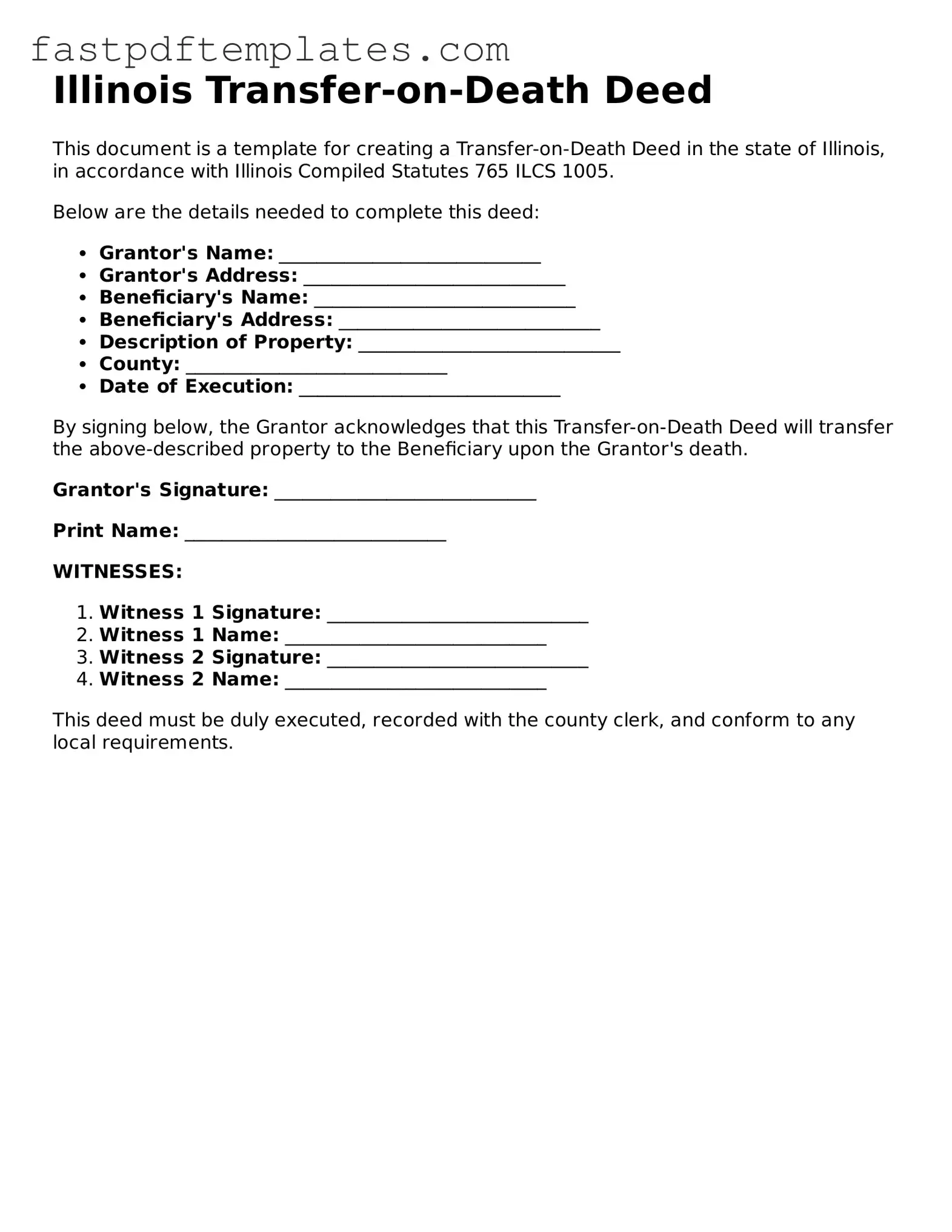The Illinois Transfer-on-Death Deed (TODD) is a unique estate planning tool that allows property owners to pass their real estate directly to their beneficiaries upon their death, without going through probate. This document shares similarities with the Last Will and Testament. A will outlines how a person's assets should be distributed after their death, including real estate. However, while a will requires probate, which can be a lengthy and costly process, the TODD allows for a more straightforward transfer, making it an attractive option for many individuals looking to simplify their estate planning.
Another document that bears resemblance to the TODD is the Revocable Living Trust. Like the TODD, a revocable living trust allows property to be transferred outside of probate. Property placed in a trust can be managed during the owner’s lifetime and distributed according to the terms of the trust after their death. This document provides flexibility and control, similar to the TODD, but it can also require more maintenance and complexity in its setup and management.
The Beneficiary Designation form is another document that shares characteristics with the TODD. This form is commonly used for financial accounts, such as bank accounts and retirement plans, allowing account holders to name beneficiaries who will receive the assets directly upon their death. Just like the TODD, a beneficiary designation avoids probate, enabling a quicker transfer of assets. However, it typically does not cover real estate, making the TODD a more suitable option for property owners.
Power of Attorney documents, particularly those for health care and financial matters, also exhibit similarities with the TODD. While the TODD focuses on the transfer of real estate upon death, a Power of Attorney allows individuals to appoint someone to make decisions on their behalf while they are still alive. Both documents empower individuals to control their assets and ensure their wishes are honored, although they operate in different contexts—one for life and one for after death.
The Joint Tenancy Agreement is another legal document that has a connection to the TODD. In a joint tenancy, two or more people own property together, and upon the death of one owner, the property automatically transfers to the surviving owner(s). This right of survivorship is similar to the TODD's mechanism of transferring property upon death, but joint tenancy requires all owners to be alive at the time of transfer, while the TODD can designate beneficiaries who may not be co-owners.
Lastly, the Life Estate Deed is comparable to the TODD in that it allows for the transfer of property while retaining certain rights during the owner’s lifetime. With a life estate, the property owner retains the right to use the property until their death, at which point it automatically passes to the designated remainderman. While both documents facilitate a seamless transfer of property, the life estate involves more complex rights and responsibilities during the owner’s life, whereas the TODD allows for full ownership until death without ongoing obligations.
